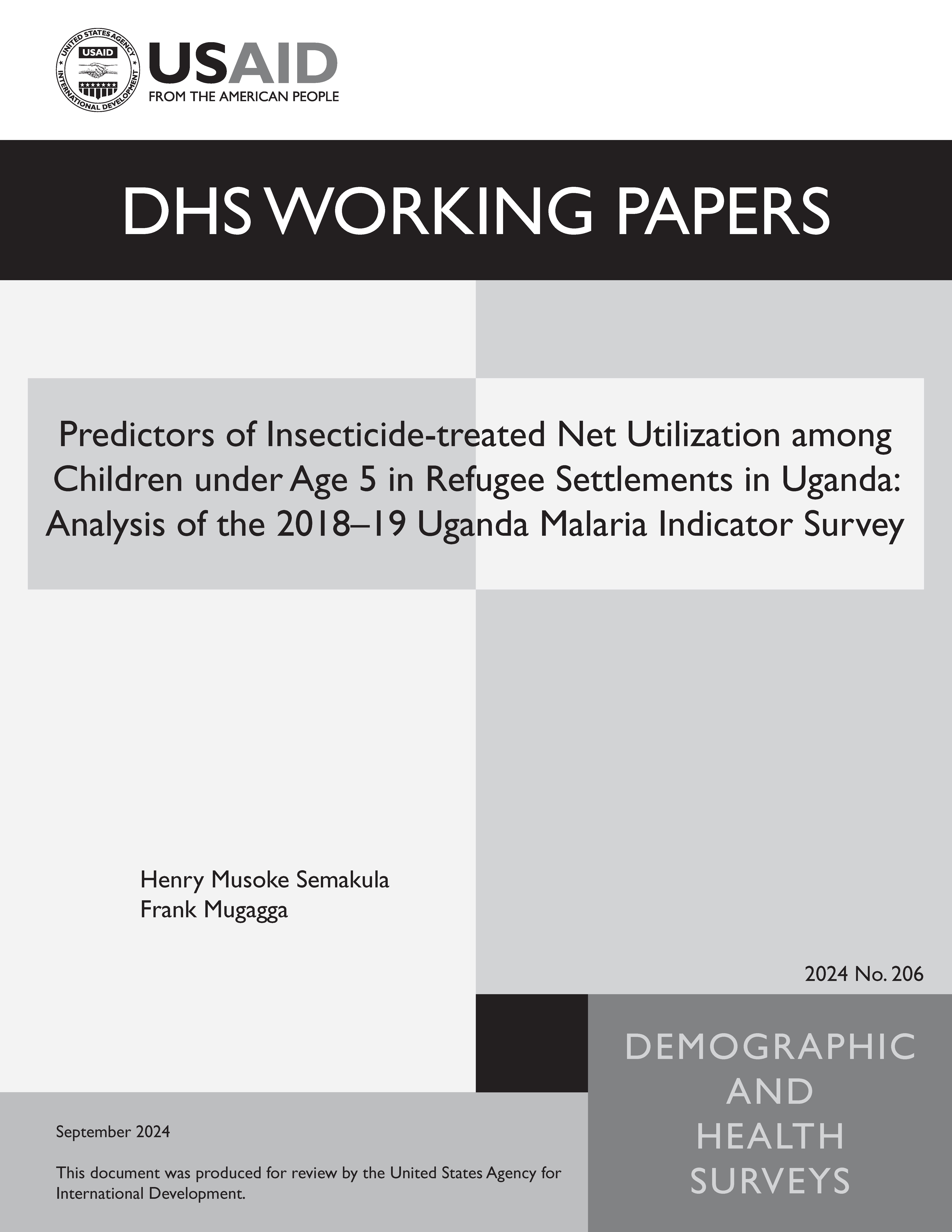There is no printed copy available to order.
Abstract:
BACKGROUND: The World Health Organization has identified the use of insecticide-treated nets (ITNs) as an effective approach for malaria prevention. Despite the distribution of ITNs by the Government of Uganda to refugees, malaria is among the key causes of mortality and morbidity among children under age 5 in refugee settlements. There are persistent challenges and complexities in malaria control and prevention efforts in these settings. By addressing the unique challenges faced by refugees in using ITNs for their children under age 5, we can make significant strides toward achieving malaria control and improving the health and well-being of children in refugee settlements.
METHODS: We utilized data from the 2018–19 Uganda Malaria Indicator Survey, the first nationally representative survey that focused on malaria indicators in refugee settlements, to identify individual and household factors associated with ITN usage among children under age 5 in refugee settlements. Our analytic sample included 589 children under age 5 who live in refugee settlements. We used descriptive analysis to generate summary statistics, chi-square tests to assess the bivariate association between ITN use and the independent variables, and multivariable logistic regression modeling to assess the magnitude of the associations after controlling for other covariates. All analyses considered the survey sampling design and sampling weights and were conducted with Stata version 18.
RESULTS: The logistic regression analysis revealed several significant associations among factors that influence ITN usage. The odds of children sleeping under an ITN were higher if their mothers had secondary and higher education (8.1 times) as well as primary education (1.5 times) compared to children whose mothers had no education. The odds of children sleeping under an ITN were reduced by 50% if their mothers were pregnant, as compared to children whose mothers were not pregnant. The odds of children sleeping under an ITN were 70% lower if their mothers knew that “not sleeping in nets” caused malaria compared to those who didn’t know. Mothers who were exposed to anti-malaria messages had lower odds of their children sleeping under ITNs. Greater odds of children sleeping under ITNs were observed if their mothers were able to hang the ITNs with ease (3.7 times). Households with televisions had lower odds of their children sleeping under ITNs. In addition, the odds of children sleeping under an ITN were reduced by 40% in female headed households compared to male headed households. Further, children in households in the northern refugee settlements had 2.4 times greater odds of sleeping under ITNs compared to those in the southern refugee settlements.
CONCLUSION: When correctly and consistently used, ITNs can provide significant benefits for malaria prevention. The results highlight areas of intervention that can increase ITN use among children under age 5 in refugee settlements in Uganda. Improving access to education for mothers, providing targeted health education on the importance of ITN usage during pregnancy, dispelling misconceptions about malaria transmission, facilitating the proper installation of ITNs, addressing gender disparities in household decision-making, and ensuring equitable distribution of ITNs across refugee settlements can contribute to increased ITN utilization among children under age 5. Further exploration is needed to understand why television ownership and exposure to anti-malaria messages did not translate into increased ITN usage and to identify potential barriers or factors that influence this relationship.
 Predictors of Insecticide-treated Net Utilization among Children under Age 5 in Refugee Settlements in Uganda: Analysis of the 2018–19 Uganda Malaria Indicator Survey (PDF, 961K)
Predictors of Insecticide-treated Net Utilization among Children under Age 5 in Refugee Settlements in Uganda: Analysis of the 2018–19 Uganda Malaria Indicator Survey (PDF, 961K)
